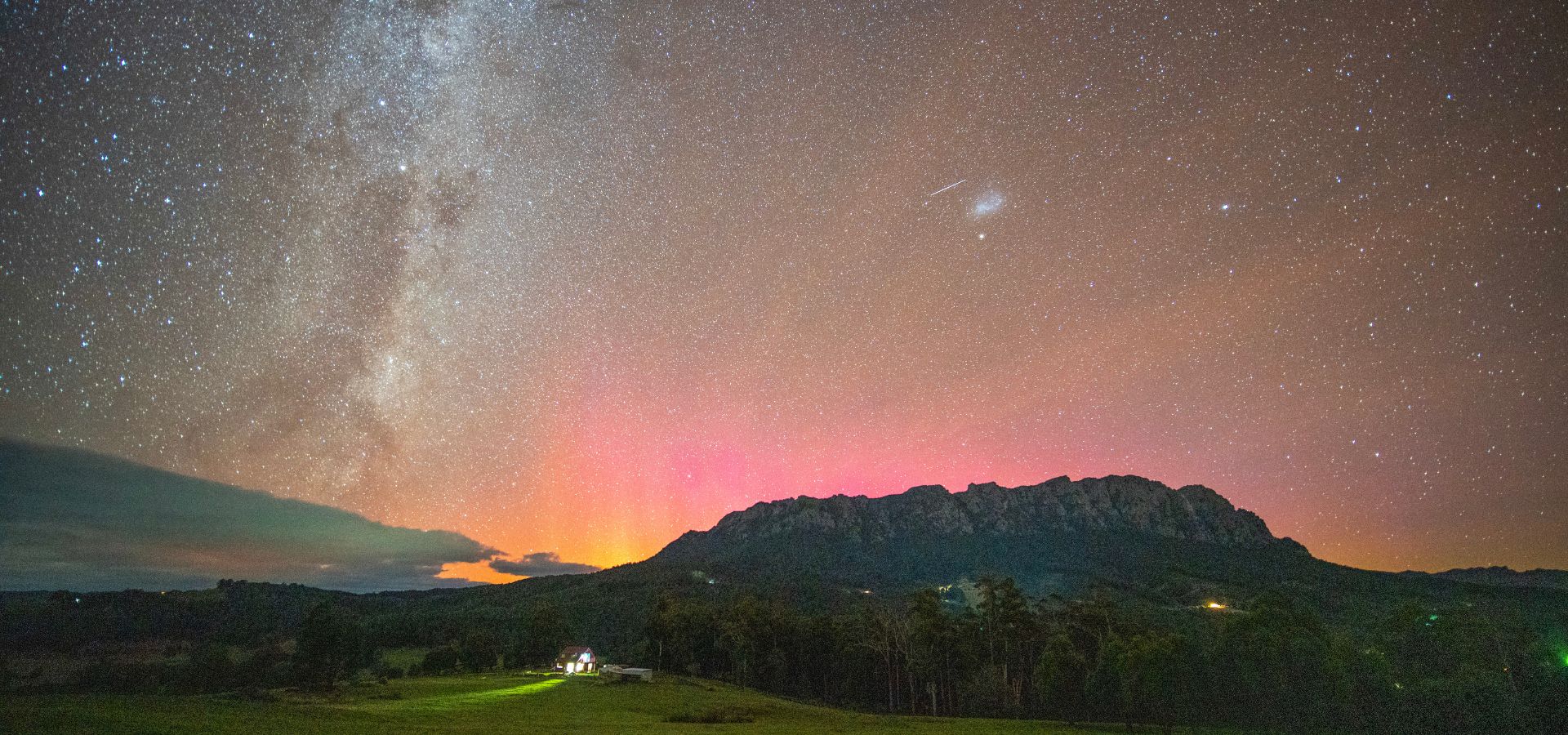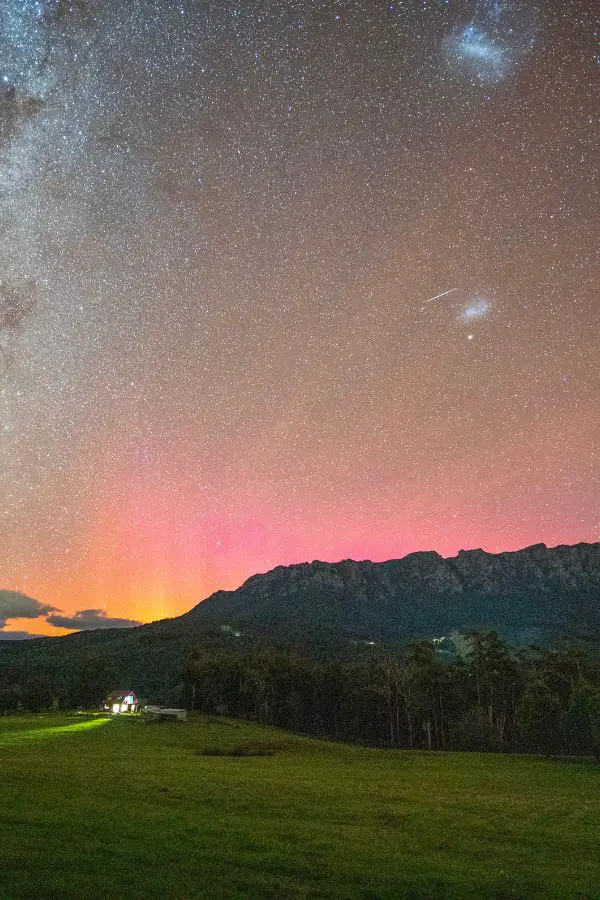The Aurora Australis, or Southern Lights, is a stunning natural phenomenon best viewed in Tasmania, Australia. This comprehensive guide delves into the science behind the aurora, optimal viewing conditions, the best locations in Tasmania for witnessing this celestial event, photography tips, and the experience of aurora chasing.
Why Does the Aurora Australis Occur?
The Aurora Australis, similar to the Aurora Borealis in the northern hemisphere, is a natural light display that occurs due to the interaction between the Earth’s magnetic field and charged particles from the Sun. This fascinating phenomenon begins with the Sun emitting a continuous stream of charged particles, a phenomenon known as the solar wind. This stream is primarily composed of electrons and protons.
When these solar particles reach Earth, they are drawn towards the magnetic poles by the Earth’s magnetic field, which extends far into space and is stronger at the poles. As these charged particles journey towards the Earth’s magnetic poles, they collide with molecules and atoms in the Earth’s atmosphere, particularly oxygen and nitrogen.
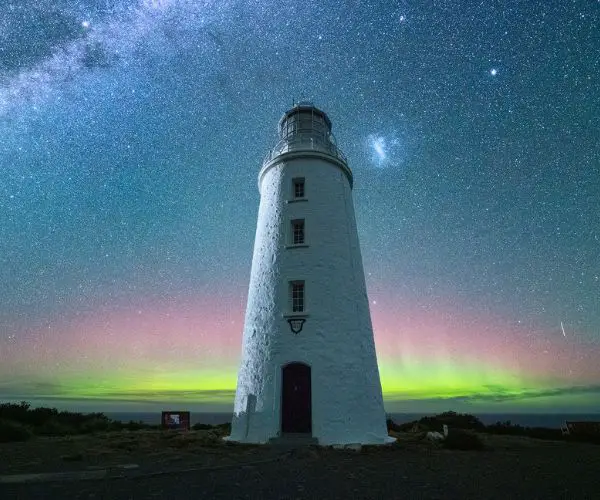
The collisions between the charged solar particles and atmospheric molecules excite these atoms and molecules, causing them to gain energy. When they return to their normal state, they release this energy in the form of light, creating the beautiful and varied colors of the aurora. The specific colors of the aurora depend on which gas is involved and the altitude of the collision. Oxygen molecules, at higher altitudes, emit a red light, while at lower altitudes, they produce a greenish hue. Nitrogen typically contributes blue and purplish-red colors to the aurora.
The intensity and frequency of the auroral displays are heavily influenced by geomagnetic and solar activity. Periods of higher solar activity result in more intense and frequent auroral occurrences. The Aurora Australis is particularly visible in high-latitude regions in the southern hemisphere, such as Tasmania, due to its proximity to the Earth’s magnetic south pole.
Best Conditions for Viewing the Aurora Australis
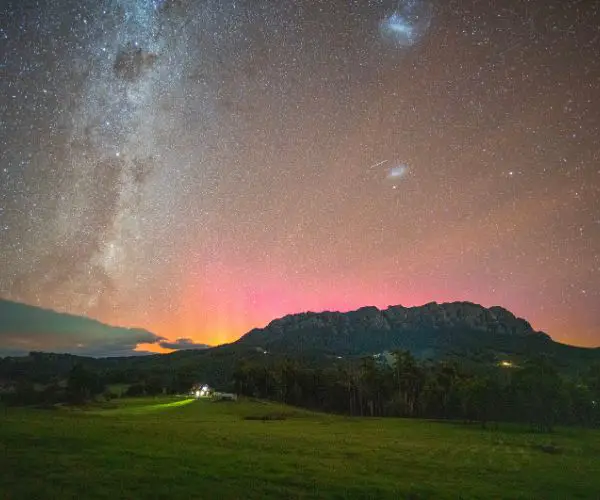
Timing and Season
The best times for aurora viewing are between 8pm and 2am, with winter nights (June to August) being ideal due to their length and darkness. Spring (September to November) and autumn (March to May) also offer good viewing opportunities. Moon phases affect visibility; times when the moon is less bright are preferable.
Weather and Location
Clear, cloudless skies are crucial. Light pollution should be minimal, so locations far from city lights are best. Facing south with an unobstructed horizon is essential, as the aurora is visible in the southern sky.
Best Locations for Viewing the Aurora Southern Lights in Tasmania
Tasmania offers several prime locations for viewing the Aurora Australis, each with its unique advantages. Each location has its unique charm and viewing conditions, so it’s worth checking the aurora forecast and weather conditions before planning a trip. Also, remember that aurora sightings are never guaranteed, and patience is often key to a successful viewing.
South Arm Peninsula
Located near Hobart, this area offers dark skies and a clear southern horizon. It’s relatively accessible and provides various spots along the coast for unobstructed views.
Bruny Island
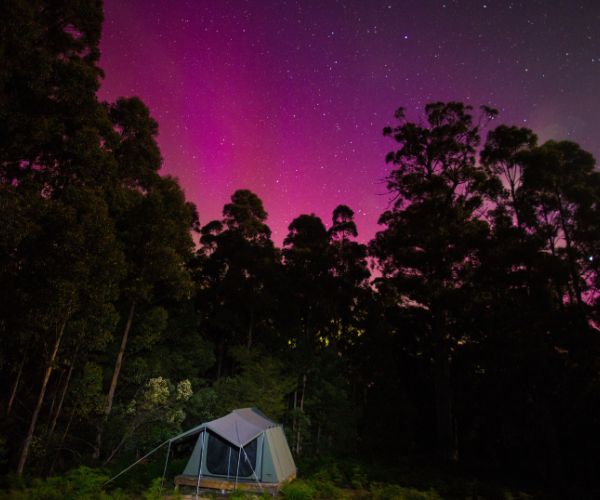
Known for its minimal light pollution, Bruny Island offers an excellent vantage point. The Neck, a narrow isthmus connecting the north and south parts of the island, is particularly popular.
Mount Wellington
Overlooking Hobart, the summit of Mount Wellington can provide a spectacular view of the aurora, though it’s often colder and windier here.
Cockle Creek
As the southernmost point accessible by road in Australia, it offers a very clear view of the southern horizon. The remote location means very little light pollution.
Tasman Peninsula
Areas like Fortescue Bay and Cape Pillar in the Tasman National Park offer secluded and dark spots ideal for viewing the aurora.
Cradle Mountain-Lake St Clair National Park
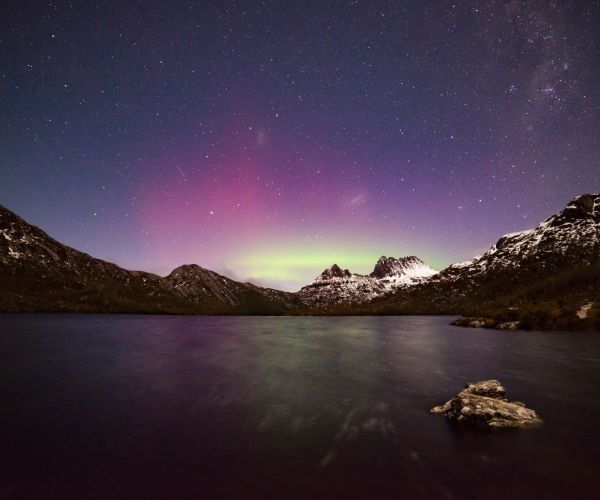
While a bit more to the northwest, Cradle Mountain has a high altitude and clear skies and can sometimes offer a good chance to see the aurora.
South West National Park
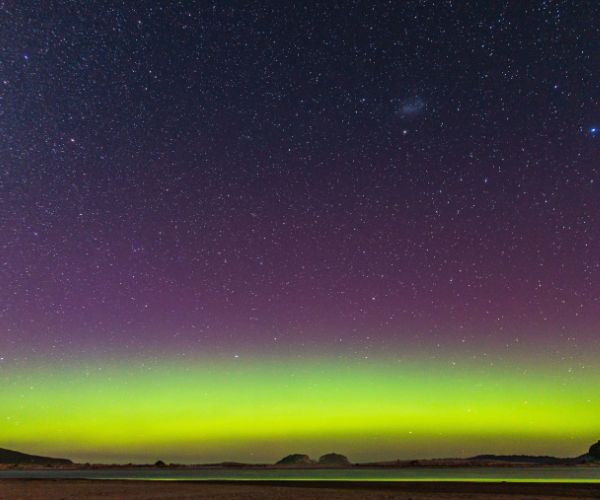
This remote and largely untouched area offers some of the darkest skies in Tasmania, ideal for aurora watching.
Tessellated Pavement, Eaglehawk Neck
The Tessellated Pavement is stunning at the best of times. Unique geological features provide a stunning foreground for aurora photos.
Central Plateau
Known for its vast skies and alpine landscapes, offering an alternative inland viewing location.
How to Photograph the Aurora Australis Southern Lights
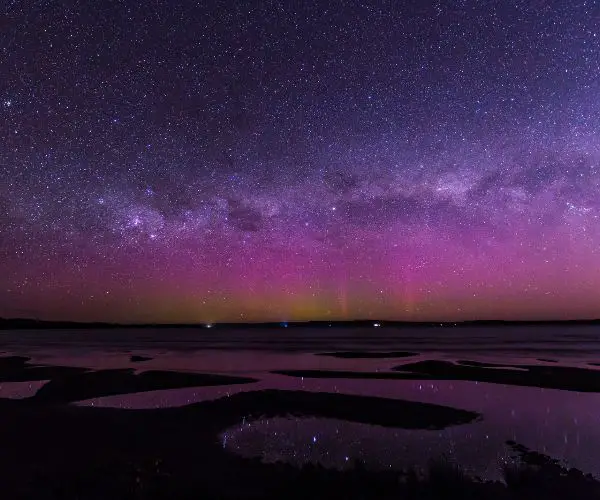
Well taken photos of the Aurora Australis are truly something to admire. Here are some tips on how to take the best photo and capture all the light and colour.
Essential Equipment
A tripod and a camera capable of long exposures (DSLR, Mirrorless) are necessary. A warm jacket and a clear view to the south are also important.
Camera Settings
Recommended settings include a shutter speed of 15-30 seconds, aperture as low as possible (f2.0 or less), and ISO between 2000-5000. Manual focus should be set to infinity or adjusted for sharpness.
Technique
Continuous shooting or intervalometer use is recommended for time-lapse creation. Test shots should be taken to adjust settings for the best exposure.
Aurora Chasing Experience
Community Engagement
Joining online communities like the Aurora Australis Tasmania Facebook group can provide real-time updates and valuable insights from experienced aurora chasers.
Personal Narratives
Personal experiences shared by community members can offer practical advice and tips on finding and photographing the aurora, as well as managing expectations regarding the unpredictable nature of this phenomenon.
In summary, witnessing the Aurora Australis in Tasmania is a unique and unforgettable experience that combines the understanding of this natural phenomenon, choosing the right location and time, and employing appropriate photography techniques. Engaging with online communities and staying informed about weather and auroral activity can significantly enhance the chances of capturing this incredible natural light display.

